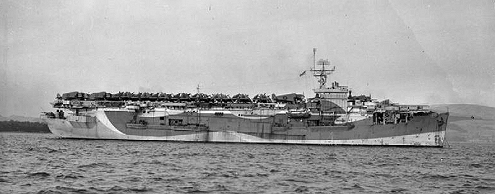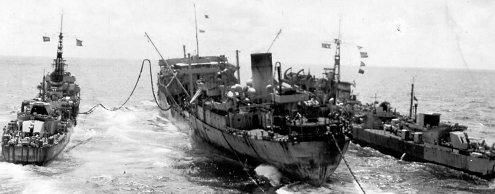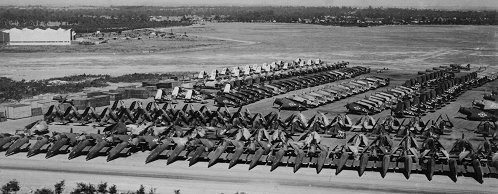Two new fleets to engage the Japanese on two fronts
A major reorganisation of naval resources
Following the successful Allied landings in France during the summer of 1944, Operation OVERLORD in June and Operation DRAGOON in August, Britain began to reallocate resources to the Far East and the war against Japan.
Two new fighting forces were officially formed in November 1944 to operate against the Japanese in the Pacific and Indian oceans; a restructured Eastern Fleet was eedesignated the East Indies Fleet (EIF) and would operate in the Indian Ocean while a new force the British Pacific Fleet (BPF) was assembled to join the American forces in the Pacific.
The British Pacific Fleet
Admiral Sir Bruce Fraser hoisted his flag in H.M.S. TARANTULA at Colombo as Commander in Chief British Pacific Fleet on November 22md 1944. This was a Carrier Strike Force for operations against the Japanese in the Pacific as the allies fought to regain territories in the region and ultimately the invasion of Mainland Japan. After working up with elements of the EIF and conducting operations ROBSON, LENTIL, MERIDIAN One, and MERIDIAN Two during Demander 1944 and January 1945 they arrived in Sydney Australia on February 10th. Here the 5 Fleet Carriers, 2 Battleships, 5 Cruisers, 10 Destroyers became Task Force 113. On Arrival at the intermediate base at Manus in the Admiralty Islands they came under the operational control of Admiral Raymond Spruance USN, C in C US Fifth Fleet on March 23rd and Redesignated Task Force 57.The East Indies Fleet
Admiral Sir Arthur J. Power hoisted his flag in H.M.S. CARADOC at Colombo as Commander in Chief East Indies Fleet on November 22md 1944. This fleet would operate in the Indian Ocean providing trade protection for convoys and conduct combat operations against the Japanese in Burma and Malaya.The Fleet Train
This was a force specially assembled to service the Logistic support needs of the BPF while at sea. Royal Fleet Auxiliaries and requisitioned Merchant Fleet Auxiliaries alongside Naval support vessels supplied Fuel oil, naval, air and armament stores, replacement airframes and aero engines, fresh and frozen provisions in a supply chain that stretched from Australia to the replenishment areas at sea off Japan.Recent site activity
This site is a work in progress – new & updated pages will be listed here
Site last updated: 19 September 2023
British Pacific Fleet
RN Auxiliary Hospital Sydney
RN Auxiliary Hospital Brisbane
H.M.H.S. OXFORDSHIRE
H.M.H.S. EMPIRE CLYDE
H.M.H.S. VASNA
H.M.H.S. GERUSALEMME
H.M.H.S. TJITJALENGKA
H.M.A.S. PIRIE
East Indies Fleet
RN Auxiliary Hospital Durban
RN Auxiliary Hospital Mombasa
RN Auxiliary Hospital Trincomalee
RN Auxiliary Hospital Diyatalawa
RN Auxiliary Hospital St. Peter's, Colombo
Fleet Carriers in the Pacific

Six Fleet Carriers, the largest of which could carry 70 aircraft, and four Light Fleet Carriers carrying 40 aircraft, were allocated to the BPF Carrier Strike Force
Escort Carriers in the Indian Ocean

Fifteen smaller Escort Carriers were allocated to the EIF operating on trade protection duties, and Fighter Carriers & Assault Carriers operating invasion forces
RN, RFA and Merchant Auxiliary vessels for replenishment at sea

Replenishment at Sea – this tanker is simultaneously pumping fuel oil to three Destroyers, two abeam using suspended hoses and the third astern via a floating hose
Mobile Naval Airfields established to support the BPF

The reserve aircraft park at Royal Naval Air Station Bankstown, HMS NABBERLEY at Sydney, New South Wales. The airfield, and seven others were loaned to the RN to house MONABs 1 - 7n.